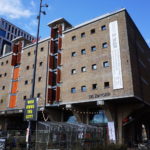Presentation of the town
Amsterdam is the capital and largest city of the Netherlands, with a population around 834.713 inhabitants. The city, located in the province of North Holland, is part of the densely populated Randstad urban region, which furthermore includes the other three largest Dutch cities (Rotterdam, The Hague and Utrecht) and belongs to the so-called ‘North Wing’ of the Randstad, which is economically the most powerful region of the Netherlands.
Dating back to the 13th century, Amsterdam got its start as a trading city. From the very beginning, Amsterdammers recognized the importance of building relationships with other cultures, especially when this helped facilitate trade and economic development. Today, Amsterdam retains its character as an open and tolerant society, attracting visitors and new residents from all corners of the globe. It is one of the most multicultural city in the world, a melting pot of cultures, with residents from 180 different countries, embracing a variety of different lifestyles, religions and beliefs.
Alongside tulips and windmills, the global image of Amsterdam is one of a city entwined with water. Since its development in the 17th century, Amsterdam’s Canal Ring has grown to be one of the world’s most unique urban landscapes. And it not only remains a historic and beautiful water network through the city, but a stunning backdrop for fantastic cultural and sporting events throughout the year. Since 1999, the city’s distinctive canal landscape has officially been protected, and in 2010 the Amsterdam Canal Ring was added to UNESCO’s World Heritage List.
Amsterdam is one of the smartest, healthiest and greenest cities in Europe. Always careful to the environment and to the development of a heath life style (in fact, according to estimates, there are more bikes in Amsterdam than permanent residents), the city has promoted a wide range of creative smart initiatives, pilots and programs in order to provide smart solutions to global challenges, using innovative technologies and solutions to provide citizens with more effective and efficient services and a better quality of life.
One of the most lively European capitals, Amsterdam offers an exciting art, music, film and theatre scene.
Focus CLIC Project
An added value is represented by the cultural organization Pakhuis de Zwijger Foundation based in Amsterdam, which will enhance networking with Circular Amsterdam activities, models and outcomes, particularly for the circularization of the construction industry through adaptive reuse of cultural heritage, contributing to spreading circular models in the territories involved (Salerno city, Rijeka city, Västra Götaland region).
The adaptive reuse model promoted by the Foundation starts with the recovery of a warehouse in the city of Amsterdam. The original warehouse was built in 1934 and should have been demolished when the Eastern Docklands area underwent a major renovation. A bridge was meant to be built where the warehouse stands, but simultaneously the warehouse was appointed to be a national monument. Because monuments cannot be demolished, the bridge now runs through the building. On April 7, 2005 the start signal was given for the largest restoration project in history of Stadsherstel and architect André van Stigt transformed the original warehouse to a warehouse for the creative industries.
Together with Stadsherstel and the unique ‘Broedplaatsen-beleid’ (creative hubs policy) of Amsterdam different amounts of rents on the venues and the offices offer the creative industries a stage within the city. All daily businesses are in hands of Pakhuis de Zwijger organized in a foundation, a food and beverage B.V. and a rental B.V. With its social entrepreneurial approach, Pakhuis de Zwijger uses the revenues of commercial renting at daytime to pay off the costs of the venues for the evening programmes. This means that subsidiarity or partnerships goes directly into organizing the program and makes it possible to offer the programmes for free.









